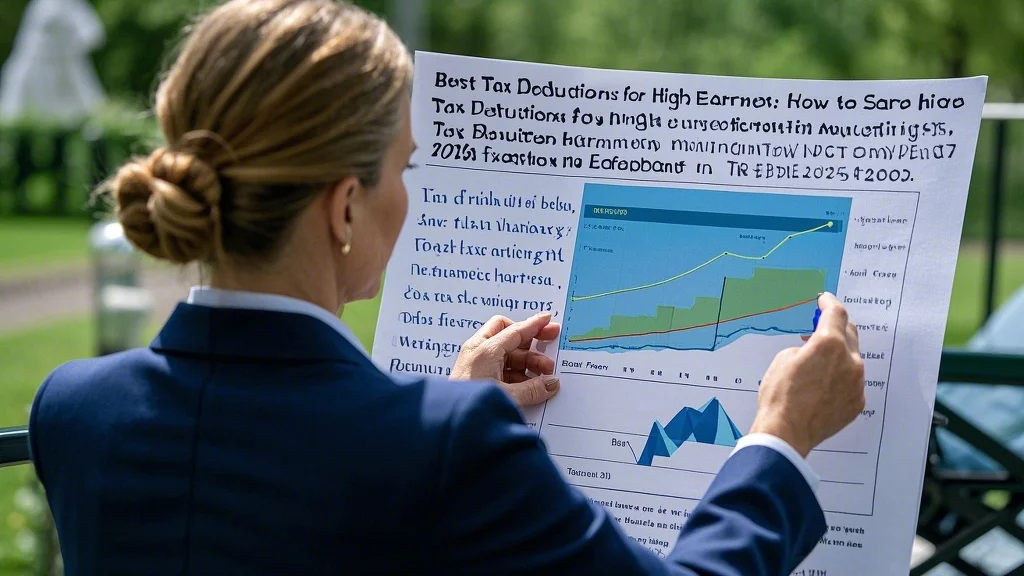Maximizing Retirement Contributions for Tax Savings
High earners have unique opportunities to leverage retirement accounts as powerful tax deductions for high earners. While traditional IRA deductions phase out at higher incomes, workplace plans like 401(k)s and 403(b)s allow up to $23,000 in pre-tax contributions for 2024 ($30,500 if you’re 50+). For self-employed individuals or small business owners, SEP IRAs and Solo 401(k)s can shelter up to $69,000 annually. These vehicles form the foundation of tax-efficient wealth management for affluent individuals, reducing current taxable income while building long-term wealth.
Defined benefit pension plans represent another often-overlooked option in tax planning tips 2025 for high-income professionals. These plans can potentially allow six-figure annual contributions for doctors, lawyers, and other professionals with consistent income. Cash balance plans, a hybrid between pensions and 401(k)s, are particularly attractive for business owners aged 45-60 who want to accelerate retirement savings. When combined with traditional retirement accounts, these strategies can create substantial income tax deductions while securing your financial future.
Strategic Charitable Giving Techniques
Philanthropy transforms into one of the most effective tax deductions for high earners when executed strategically. Donor-advised funds (DAFs) allow you to make a large charitable contribution in a high-income year (claiming the deduction immediately) while distributing grants to charities over time. For those over 70½, qualified charitable distributions (QCDs) from IRAs satisfy required minimum distributions without increasing taxable income – a key tactic in tax strategies for high-income earners. These methods demonstrate how charitable intent can align with sophisticated tax planning.
Appreciated securities donations represent another pillar of tax-efficient wealth management for affluent investors. By donating stocks or mutual funds held more than one year, you avoid capital gains taxes while claiming the full market value as a charitable deduction. Private foundations, while more complex to establish, offer additional control and planning opportunities for substantial charitable giving. As part of comprehensive tax planning tips 2025, bundling multiple years’ worth of charitable giving into a single year might help surpass the 60% AGI limit for cash contributions and maximize deductions before potential tax law changes.

Business Deductions for Professionals and Entrepreneurs
Self-employed individuals and business owners have access to valuable income tax deductions that can significantly reduce taxable income. The qualified business income (QBI) deduction provides up to 20% off pass-through business income, though phaseouts apply to certain high-earning professionals. Home office deductions, business vehicle expenses, and equipment purchases through Section 179 expensing or bonus depreciation can create substantial write-offs. These deductions form critical components of tax strategies for high-income earners who operate their own businesses.
Retirement plans for small businesses deserve special attention in tax planning tips 2025. Cash balance plans allow contributions far exceeding standard 401(k) limits – potentially $100,000+ annually for older business owners. Health reimbursement arrangements (HRAs) and health savings accounts (HSAs) provide additional ways to deduct medical expenses. When implementing comprehensive tax-efficient wealth management, business owners should coordinate their personal and business deductions to maximize benefits across all aspects of their financial lives.
Real Estate and Investment Property Strategies
Real estate investments offer some of the most powerful tax deductions for high earners available. Cost segregation studies can accelerate depreciation on commercial properties, creating substantial upfront deductions. Opportunity zone investments allow deferral (and potential reduction) of capital gains while investing in designated communities. For those qualifying as real estate professionals, passive loss limitations may not apply, enabling deductions against other income. These specialized techniques demonstrate how tax strategies for high-income earners can leverage property ownership for tax benefits.
1031 exchanges remain a valuable tool in tax-efficient wealth management for real estate investors, allowing deferral of capital gains when selling and reinvesting in like-kind properties. Vacation home rentals can provide deductions when properly structured and documented. As part of holistic tax planning tips 2025, high earners should consider how real estate fits into their overall portfolio and tax situation, potentially working with specialists to maximize available benefits while remaining compliant with increasingly complex regulations.
Tax-Efficient Investment Structures
Sophisticated investment vehicles can enhance income tax deductions for high-net-worth individuals. Oil and gas partnerships often provide intangible drilling cost deductions that can offset other income. Certain life insurance policies and annuities offer tax-deferred growth opportunities. Family limited partnerships (FLPs) can provide valuation discounts for estate planning while maintaining control of assets. These advanced structures form part of comprehensive tax strategies for high-income earners but require careful evaluation of both benefits and risks.
Municipal bonds deserve special mention in tax-efficient wealth management discussions, as their interest is exempt from federal taxes (and often state taxes if investing in your home state). For those in the highest tax brackets, the equivalent taxable yield on munis can be significantly higher than comparable corporate bonds. When incorporated into broader tax planning tips 2025, these tax-exempt investments can help manage taxable income levels while providing steady cash flow. However, investors should carefully evaluate credit quality and ensure proper diversification within their fixed income allocations.
Family and Education Planning Deductions
High earners can leverage family-related strategies as part of their tax deductions for high earners toolkit. 529 college savings plans offer state tax deductions in many jurisdictions (up to $10,000 or more in some states) while allowing tax-free growth for education expenses. Employing family members in legitimate business roles can shift income to lower tax brackets. These approaches demonstrate how tax-efficient wealth management encompasses both business and personal financial decisions.
Trusts and estate planning techniques also play a role in comprehensive tax strategies for high-income earners. While not providing immediate income tax deductions, strategies like grantor retained annuity trusts (GRATs) and charitable remainder trusts (CRTs) can reduce long-term tax liabilities. As part of forward-looking tax planning tips 2025, high-net-worth individuals should coordinate their income tax strategies with estate planning to create a cohesive approach to wealth preservation and transfer across generations.
